What Is Vegan At Olive Garden
Vegan gardening is a super-organic method of growing plants without the use of animal products.
According to the research conducted by the Vegan Society (2018), there are around 600,000 vegans in Great Britain. As a way to promote and educate the nation about a vegan lifestyle, Veganuary encourages people to go vegan for the month of January, where you would typically ditch meat and animal products in favour of a plant-based diet.
While many of us have become more conscious about how our food choices, items of clothing, beauty products and home habits have an effect on the environment, vegan gardening is only really just taking off. In fact, in autumn 2018, the UK's first ever vegan garden festival was held at Hampshire plant nursery Hortus Loci, hosted by athlete-turned-garden designer Cleve West.
To become a vegan gardener, essentially, your focus is to protect and care for the environment and help habitats to thrive, all whilst growing clean, ethically produced crops. It also means embracing rather than killing wildlife and insects, including slugs, sacrificing some crops, and making your own compost.
The concept of vegan gardening ties in with organic gardening which omits the use of manufactured chemical substances, as well as the wider 'Grow Your Own' movement which encourages us to grow and eat more fruit and vegetables, and the no dig gardening method, all of which filters into the values of today's eco-conscious gardener.

Wildroze Getty Images
Matthew Appleby, garden journalist and author of The Super Organic Gardener, tells The Telegraph : 'The lexicon of the gardener is of bugs, pests, invaders, and the gardener's psyche is to control nature in order to keep down the wildlife that threatens production. I'd say, make your garden the opposite to this – hedges, long grass, wild areas, diversity, be chemical-free, cover cropped, no dig and use organic matter. The garden should be left alone, with plenty of nesting places. If you have to kill an animal to grow a plant, sacrifice the plant.'
So what are the basic principles of vegan gardening? With a little help from the team at The Greenhouse People, here's a simple guide to get you started…
What is vegan gardening?
Vegan gardening essentially promotes plant growth and avoids the use of unnatural fertilisers and pesticides. Use of animal products are common in gardening, from manure (usually animal waste) to fertiliser (which can include blood meal and bone meal), as well pesticides that harm beneficial insects. There is no single way to embrace vegan gardening but a vegan gardener will make decisions that are earth-and animal-friendly.
Avoid digging
For starters, you should avoid digging. 'This only encourages weeds to disperse and take over your patch, requiring harmful chemicals to kill. Instead, hoe off any weeds as and when they pop up,' advises The Greenhouse People.
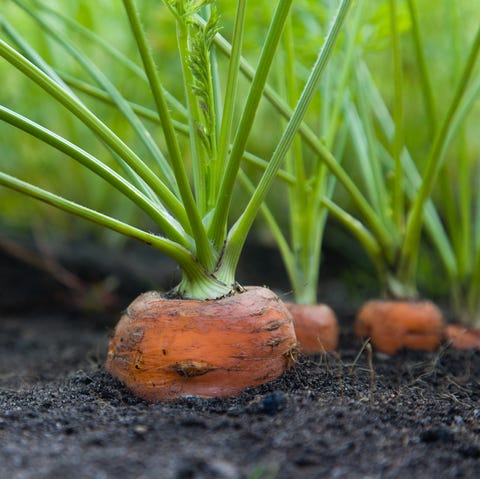
More86 Getty Images
Grow your own
If you're embracing a plant-based diet, growing your own veg can save you lots of money, plus cut your carbon footprint. An allotment patch or greenhouse can increase your yield of beautifully fresh fruit and veg all year round. Legumes (runner beans, broad beans, French beans and peas), squashes and pumpkins are great for small spaces as they can grow vertically. Meanwhile, salad leaves, herbs and tomatoes grow well in boxes on balconies and patios. If you lack square metres, a lean-to greenhouse is an ideal space-saving option to grow your own.
Green borders
'Hedges are better than walls or fences for your garden's perimeter, allowing larger animals like hedgehogs who have a taste for smaller pests like slugs to come and go as they please,' explains The Greenhouse People. 'Hedges also have sound absorbing qualities to block out nosy neighbours and make ideal nesting sites for birds.'
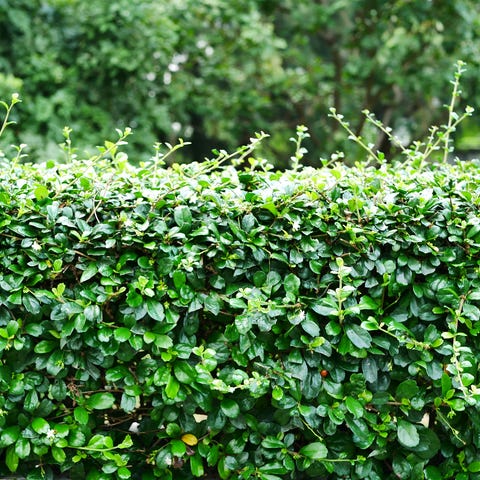
Supersmario Getty Images
A safe haven for wildlife
If you live in the countryside, the suburbs or the city, chances are your outside space is used by wildlife as a safe haven. Bee decline is a global problem and in Europe alone, there are bee losses of up to 53%, but something as simple as a bee brick can give these insects the shelter they desperately need.
'Try to keep an area of lawn unkept and long for insects to thrive,' the team at The Greenhouse People suggest. 'Borders filled with shrubs and flowering plants can give small animals shelter, and provide butterflies, birds and bees with nectar-rich food.'
Companion planting
Companion planting is an easy practice where you grow complementary plants side by side so that one plant helps another or affects the way it grows. It enables you to get the best results using the power of nature and, importantly, no harsh chemicals. The mutually beneficial relationship between the plants helps to repel pests, improve pollination and provide nutrients.
The Greenhouse People suggests the following: 'For example, lettuces, radishes and other quick-growing plants sown between hills of melons or squash will mature and be harvested long before the vines need more room. Leafy greens such as spinach grow well in the shadow of corn. Growing members of the same "family" close together increases competition for soil nutrients so disperse onions, chives, leeks and garlic across your plot.'

jess311 Getty Images
DIY compost
A vegan gardener will avoid shop-bought composts and fertilisers which often contain animal products such as blood, fish and bone, which is taken straight from the slaughterhouse floor. Instead, you should produce your own nutrient-rich organic soil with a compost bin placed in the warmest corner of your garden, using kitchen scraps and nitrogen-filled green waste.
Learn to love pests
Pests in the garden are inevitable and, to be truthful, it's as much their space as it is yours. You should embrace them by planting extra (or 'sacrificial') crops such as lettuces which pests can eat instead of your most prized plants.
Like this article? Sign up to our newsletter to get more articles like this delivered straight to your inbox.
SIGN UP
6 Bloom & Wild plants that are better than flowers
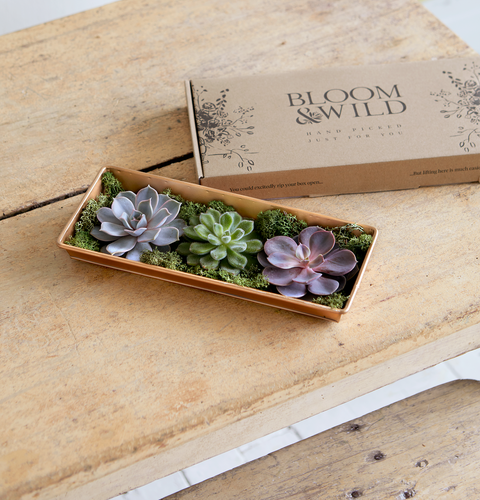
Sunkissed Succulents, £29
This trio of succulents bedded in moss can be enjoyed for months with the right care. Perfect for livening up a coffee table, desk or windowsill, the succulents come in a stylish rose gold geometric tray.
SHOP NOW We earn a commission for products purchased through some links in this article.
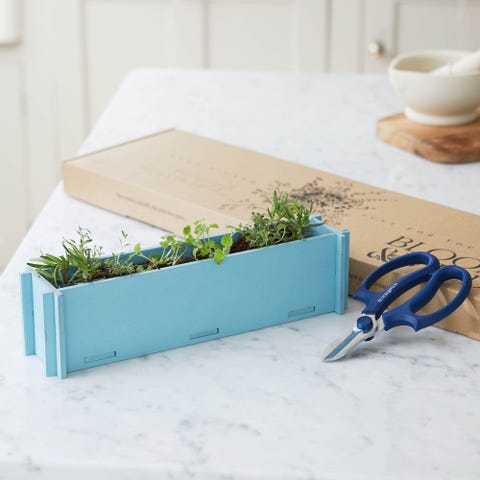
Summer Herbs, £32
This herb planter is perfect for anyone throwing a BBQ – thanks to the rosemary, oregano and thyme, which is perfect for foodies. It comes with high-quality Japanese floristry scissors.
SHOP NOW
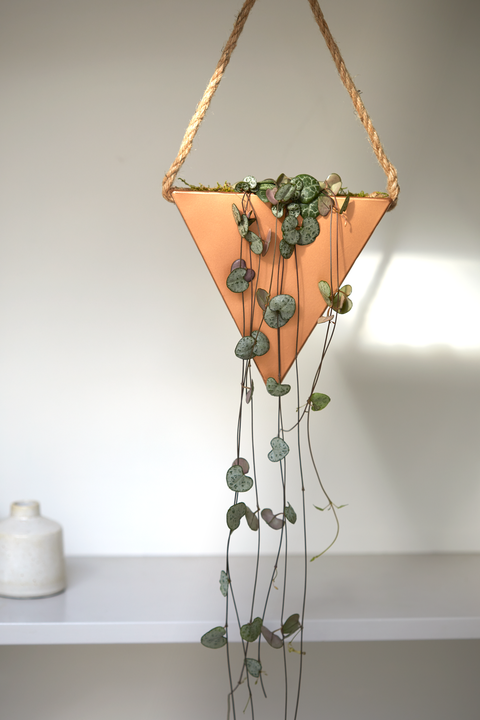
Hearts-on-a-String, £30
These heart-shaped leaves, trailing ceropegia, are super chic and cute. It comes in a rose gold-coloured hanging planter, so can be enjoyed right away.
SHOP NOW
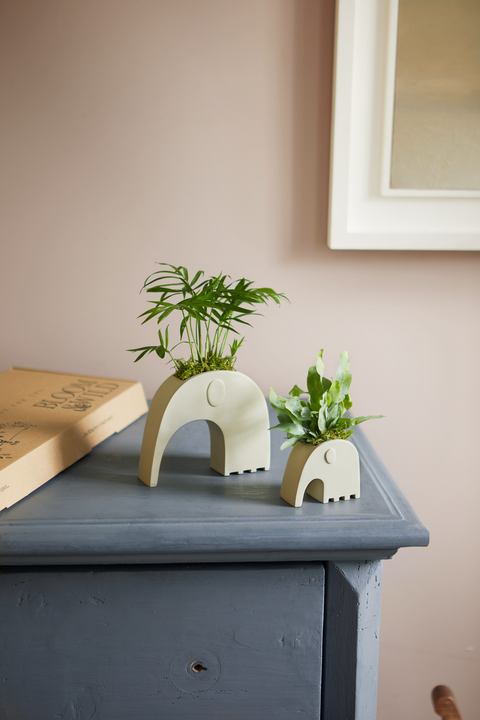
Elephant Planters, £30
From a nursery to a living room, these cute elephant planters will fit right in. The two planters, 7cm and 12cm tall, are potted with a blue star fern and parlour palm.
SHOP NOW
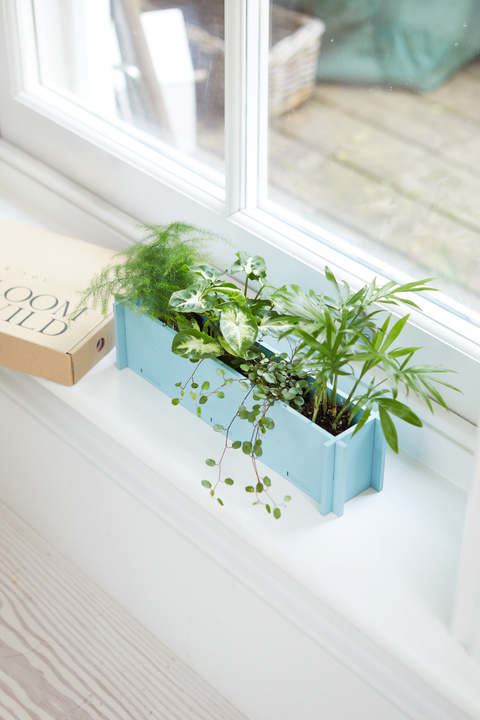
Windowsill Planter, £35
This lush green jungle thrives in natural light – and sits perfectly on a windowsill. The gift includes an assortment of ferns and foliage with a flat-packed painted wooden planter.
SHOP NOW
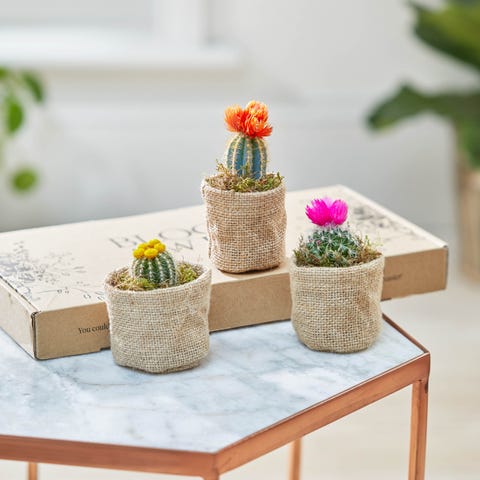
Cacti Crowd, £28
This trio of colourful cacti, wrapped in hessian jackets and finished with colourful 'hats', is inspired by the bright colours and sun-drenched sands of Mexico. It's perfect for those who want a low maintenance plant.
SHOP NOW
Olivia Heath Executive Digital Editor, House Beautiful UK Olivia Heath is the Executive Digital Editor at House Beautiful UK where she's busy uncovering tomorrow's biggest home trends, all whilst delivering stylish room inspiration, small space solutions, easy garden ideas and house tours of the hottest properties on the market.
This content is created and maintained by a third party, and imported onto this page to help users provide their email addresses. You may be able to find more information about this and similar content at piano.io
What Is Vegan At Olive Garden
Source: https://www.housebeautiful.com/uk/garden/a30459757/vegan-gardening/
Posted by: mcnultyshosselame.blogspot.com

0 Response to "What Is Vegan At Olive Garden"
Post a Comment